In this article we'll look at the differences between a "transaxle" and a "transmission". In short, a transaxle performs both the gear-changing function of a transmission and the power-splitting ability of an axle differential in one integrated unit. A transmission performs the gear-changing function only, delivering power via a single output shaft at the back of the unit. Although both perform gear shifts in the same fashion, there's often confusion about these two terms because the word "transmission" is sometimes used as a blanket description to include transaxles when it should not be.
Transmission
What Is a Transmission?
More specifically, looking up the word "transmission" in any number of locations brings similar yet varying descriptions when it comes to automotive applications. Some authoritative sources refer to a transmission vaguely as "an enclosed unit of gears that transmits power from the engine to the driving wheels of a motor vehicle." In theory, that also sounds like what a transaxle does. Other descriptions are more detailed - specifying an enclosed unit which transmits power from the engine's crankshaft to the drive shaft that leads to a vehicle's drive wheels.
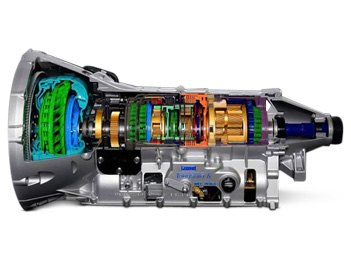

While transmission routes power from the engine through gears of various ratios, a single driveshaft exits the rear. Transmissions are not designed to be mounted in between left- and right-side axle shafts the way a transaxle assembly is.
No definition of a transmission actually mentions an ability to split torque to two different axles while being located directly between them. Also, the presence of a drive shaft mentioned confirms there is also a separate differential located elsewhere that splits power in the middle of an axle.
Which Cars Come with a Transmission?
Transmissions are mostly found in cars and trucks designed with a front-engine, rear-wheel-drive layout. In such vehicles both the transmission and engine will be mounted front-to-back rather than sideways. Both part-time and full-time 4-wheel-drive drivetrains usually feature this same layout - adding a separate, self-contained transfer case to direct power to front and rear axles via a separate set of driveshafts.
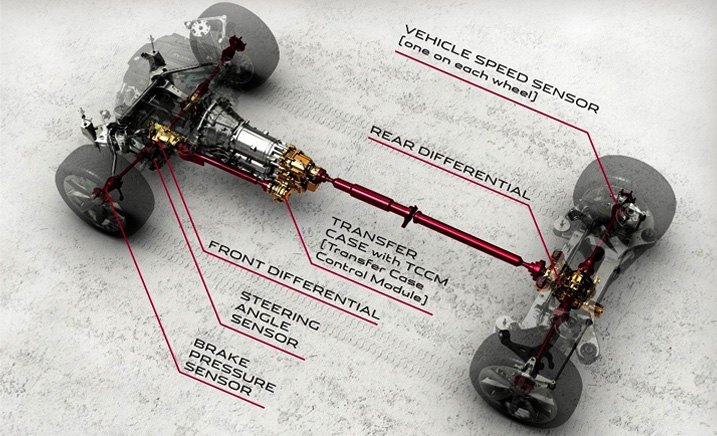
Transaxle
What Is a Transaxle?
Look up "transaxle" and in every case, you'll find a definition that clearly spells outan integrated component which combines the gear-changing function of a transmission with the power-splitting ability of a differential.
There is no single driveshaft exiting a transaxle, because there is no separate differential unit located elsewhere to receive it. Instead, shafts for both the left- and right-side drive axles themselves are directly connected to each side of the transaxle. While they may be separated, transmission cogs and differential gears are contained within one large transaxle housing.
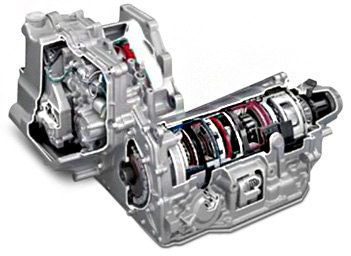

Which Cars Come with a Transaxle?
In two-wheel-drive vehicles, transaxles are found in all configurations where the engine is located at the same end of the vehicle as the drive wheels are. This includes front-engine/front-wheel-drive layouts as well as rear-wheel-drive layouts with an engine behind the passenger cockpit. Vehicles with the engine mounted behind the rear axle line are known as "rear engine" models, while vehicles with the engine behind the driver but in front of the rear axle line are known as "mid-engine" models.
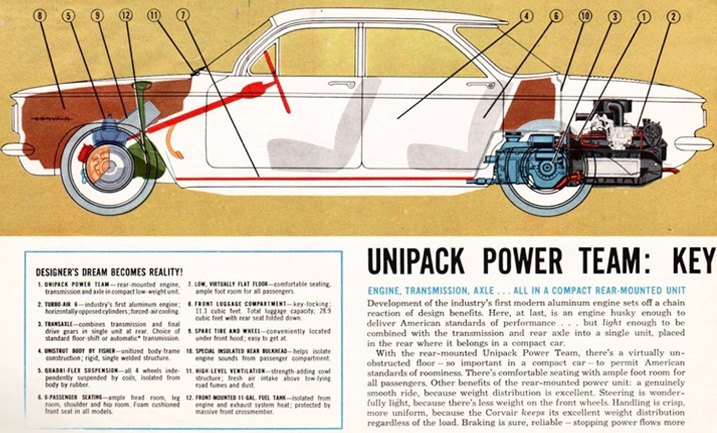
Notable rear-engine vehicles with a rear transaxle include:
- original Volkswagen Beetles and all derivative models sold in the United States through the 1970s;
- Chevrolet Corvairs from 1960-69;
- Porsche 356 and 911 models from the 1940s through present day;
- 1980s DeLorean sports cars.

Notable vehicles with a mid-mounted engine and a rear transaxle include:
- a variety of Ferraris from the 1970s through today;
- Toyota MR2s from the 1980s through the early 2000s;
- modern Lotus offerings;
- Lamborghinis from the 1970s through today;
- 1980s Pontiac Fieros;
- Ford GT40s;
- Acura NSXs;
- most low-volume supercars of various origins throughout the world built during the last 40+ years.
Another popular layout on front-engine, rear-wheel-drive vehicles oriented for performance is a transaxle that's integrated into the rear axle. Benefits of this design include more even front/rear weight distribution to enhance handling, and the absence of a separate differential unit which reduces overall vehicle weight. Because the driveshaft from the engine to the rear axle rotates at engine speed, which can be quite high, it's encased within a protective metal tube.
Notable vehicles that feature this setup include:
- Corvettes from 1997-on;
- Porsche 924/944/968 and 928 models from the 1970s through the 1990s;
- various front-engine Ferraris from the 1960s through today;
- various Alfa Romeos from the 1970s through the 1990s;
- 2003-on Aston Martins.
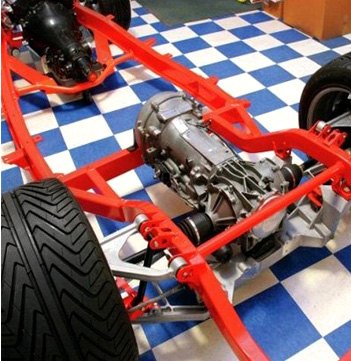
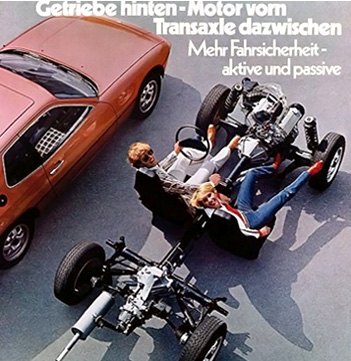
What are Continuously Variable Transmissions (CVTs)?
Continuously variable transmissions (CVTs) popular in modern vehicles can also be configured as either a transmission or a transaxle. A CVT is an automatic transmission that uses two pulley wheels (with adjustable diameters) connected by a steel band to vary gear ratios between engine and transmission output shafts. So instead having of a fixed number of gears the way traditional transmissions do, a CVT can create an infinite number of gear ratios. CVTs are most commonly found in smaller front-wheel-drive vehicles, and are usually engineered as transaxles.

Should you find yourself in need of a complete new or rebuilt transmissions, or the parts to service or repair your existing transmission, such as overhaul kits, torque converters, valve bodies, filters, and fluid, CARiD has all the high-quality parts you need in our Replacement Transmission Parts section. Should you need a transaxle or transaxle components, such as bearings, seals, or gaskets, you will find exactly what you need in our Replacement Driveline & Axle Parts category.

